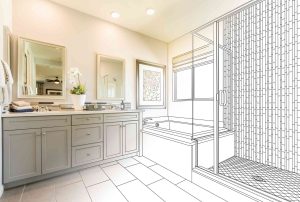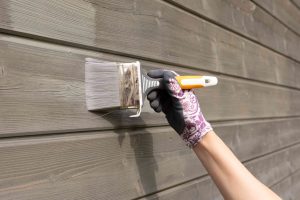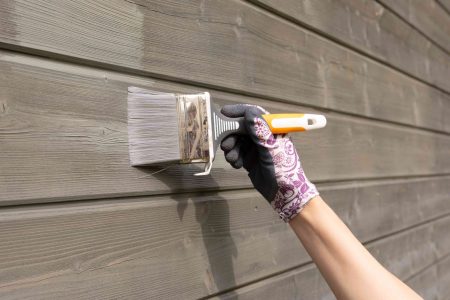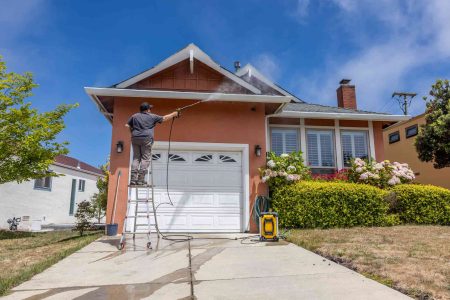During the winter, your lawn and garden may not need to be irrigated with the sprinkler system, so it makes sense to turn it off. When the time comes in the spring, however, you’ll need to turn it back on. With the sprinkler system working, your grass and flowers can get the water that they need to grow bright and lush.
Some homeowners count on a lawn service or irrigation contractor to winterize the system in the fall and turn it back on in the spring, but there is no reason to pay for this service, as it’s very easy to do yourself in just a matter of minutes.
Warning
The most important thing to remember when turning on a sprinkler system is to turn on the water slowly. You can create a sizable water hammer—a shock wave caused by a sudden change in water flow—by turning the water on too quickly. This can burst fittings or pop off sprinkler heads. Always open the system shutoff valve slowly to let the system pressurize gradually; it takes just a few seconds.
Need more help? Talk to a sprinkler technician near you
Our partners can help you compare quotes from top-rated professionals near you
Get a Quote
What You’ll Need
Equipment / Tools
- Flat-head screwdriver
- Sprinkler valve key (as needed)
- Pen or pencil
- Pliers (as needed)
Materials
- Notepad or scrap paper
Instructions
-
Locate the Main Shutoff Valve
If you don’t know where your system’s shutoff valve is located, look in your basement or crawl space for piping coming into the home near ground level. The piping should include a single shutoff valve, usually a ball valve with a lever-type handle. If there is a large water pipe coming in well below ground level, usually through a foundation wall, this is most likely your home’s main water supply, not the valve for the sprinkler system.
If there is no sprinkler system shutoff inside the home, look inside the sprinkler system valve boxes around the yard. The shutoff valve has a cross-shaped handle and may be well below ground level, inside a ground box or large pipe.
-
Locate the Vacuum Breaker
Look for the vacuum breaker fitting, which is usually above ground located near the house. This is a copper or plastic valve assembly connected to two pipes, each with a small shutoff valve.
In addition to the shutoff valves, the vacuum breaker has two test valves, called test cocks, that look like slotted screw heads. They should be turned about 45 degrees to the direction of the nipples to which they are attached. This allows air into the valve to prevent damage from freezing during winter.
-
Close the Vacuum Breaker’s Test Cocks
Close each of the two test cocks by turning with a flat-head screwdriver so that the slot on the test cock is perpendicular to the nipple.
-
Open the Shutoff Valves
Next, open the two shutoff valves on the vacuum breaker. Each valve is located on a pipe leading to the valve and usually has a butterfly-type handle. Like the test cocks, the valve handles should be set perpendicular to the pipe for winterization. Open each valve all the way by turning the handle until it is parallel with the pipe.
-
Reinstall the Main Valve Bleeder Cap
Some system shutoff valves have a little metal cap that threads onto a bleeder nipple on the side of the valve. This is used to drain residual water from the piping during the system shutdown. If your shutoff valve has a bleeder nipple, make sure the cap is in place and is tightened snugly.
-
Open the Main Valve
Slowly open the main shutoff valve to let water into the sprinkler system. For a ball valve, turn the lever handle one-quarter turn until the handle is parallel to the pipe; this is the fully open position. For an in-ground shutoff valve, use a sprinkler valve key to turn the valve counterclockwise until it stops.
-
Run a Manual Test
Set the system timer to run a manual test of all of the sprinkler zones, running each zone for about three to five minutes. As each zone turns on, watch the sprinkler heads to make sure they are working properly, and write down any problems on a notepad, so you can come back to address the issues later. The sprinklers will sputter and blow out air when they first come on; this is normal and will stop within a minute or so.
-
Check the Valves and Vacuum Breaker
Open each valve box in the ground and make sure there are no leaking valves or other problems. Confirm that all looks well with the vacuum breaker and the related valves and piping. Check the bleeder on the main shutoff valve (as applicable). If the cap is leaking, tighten it gently with pliers.
-
Get Ready to Irrigate
Correct any problems you noted during the manual test, such as adjusting spray patterns or replacing damaged sprinkler heads. Set the system timer for the first watering. If possible, it’s a good idea to water when you can keep an eye on the watering for the first time of he season to make sure everything is working properly. Afterward, it usually is most water-efficient to water at night or very early in the morning.
How to Troubleshoot Your Lawn Irrigation System
Read the full article here














